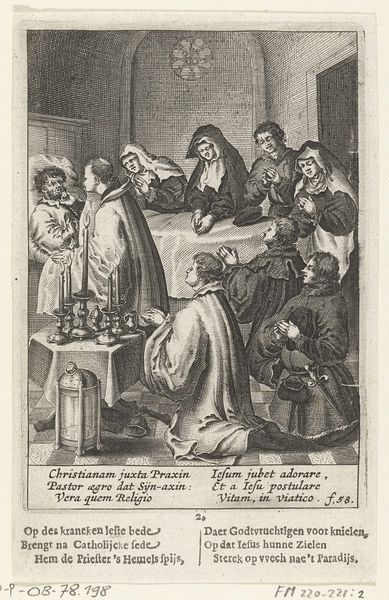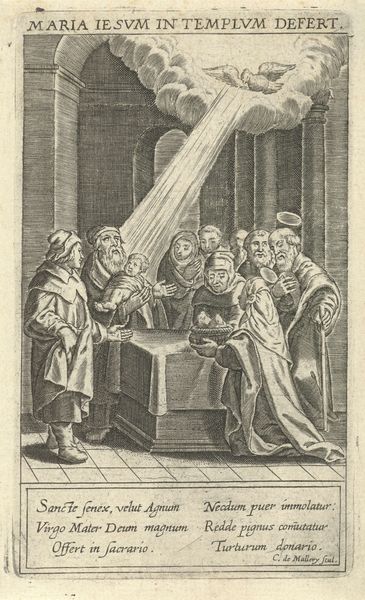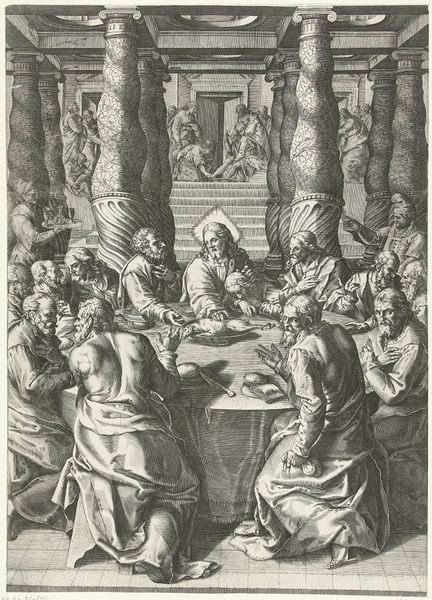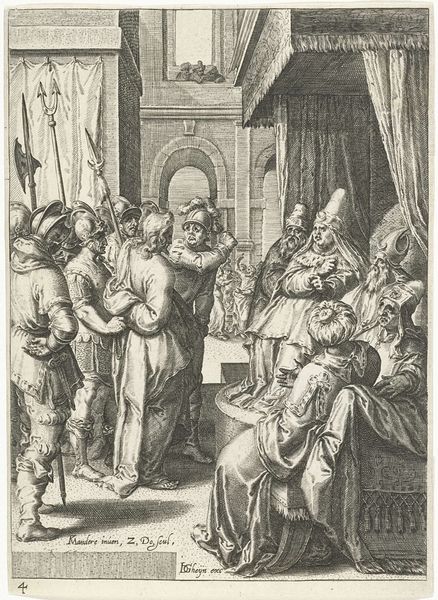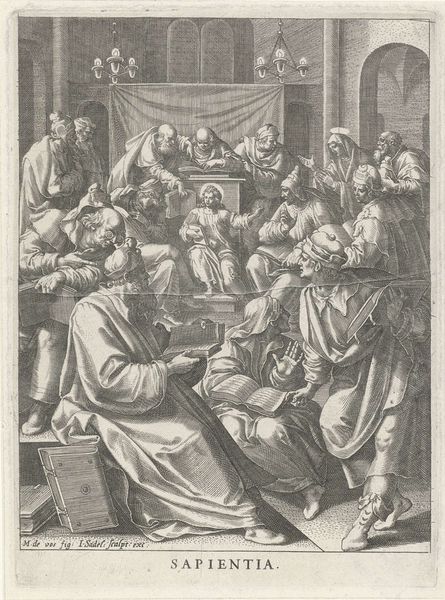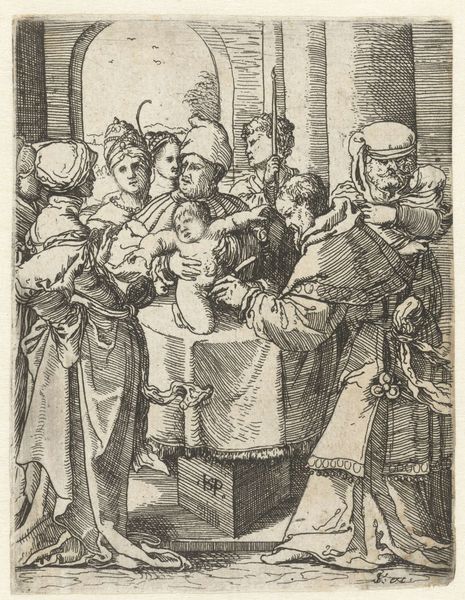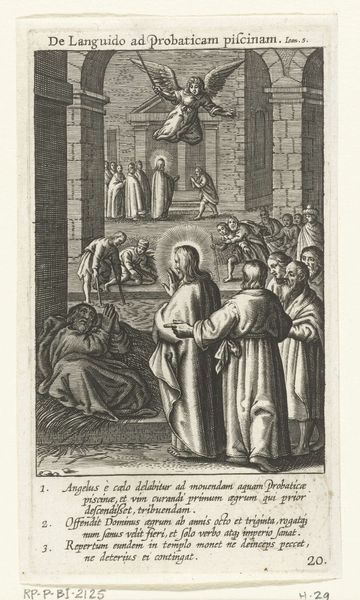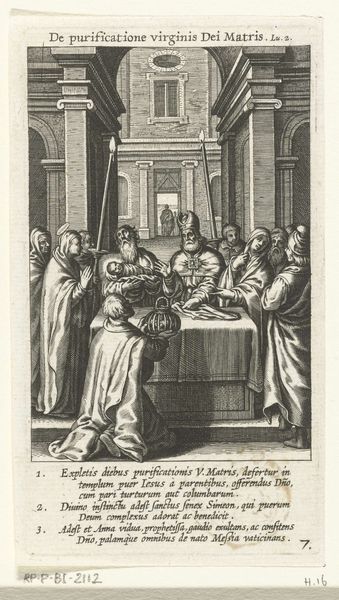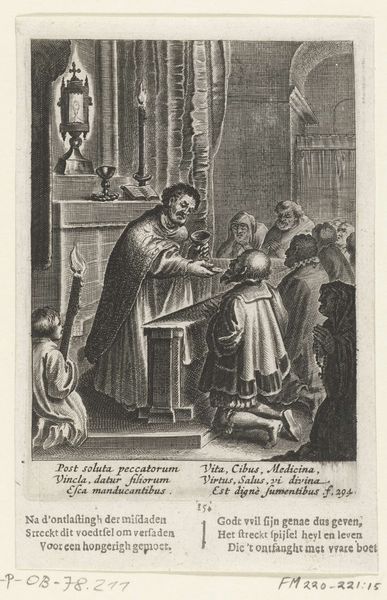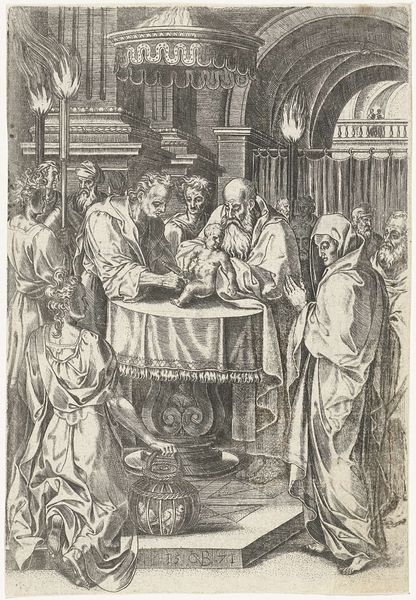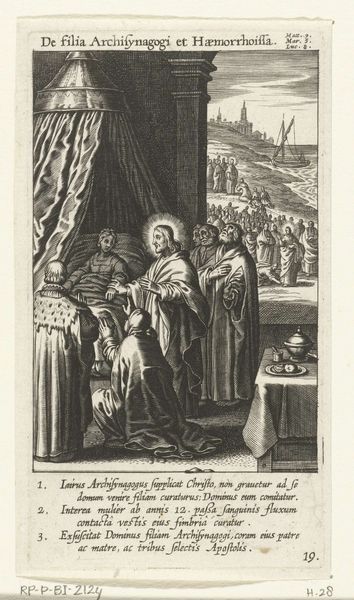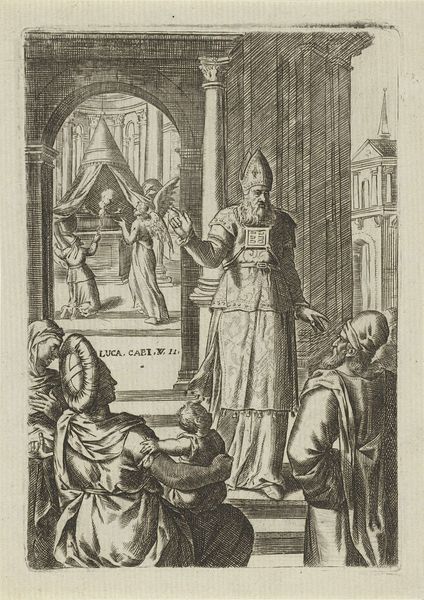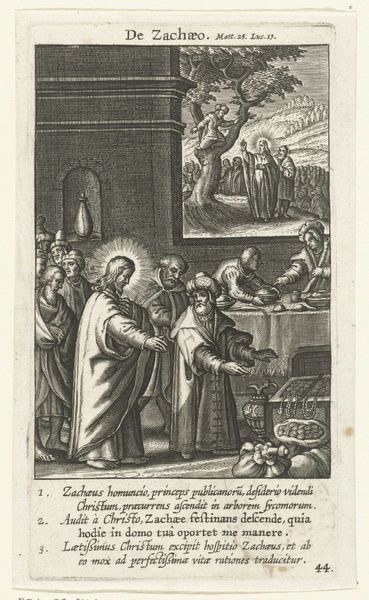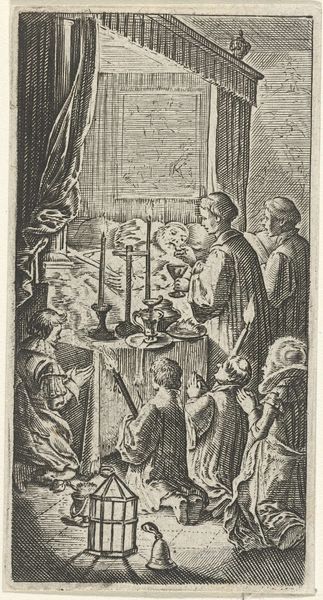
print, intaglio, engraving
#
baroque
# print
#
intaglio
#
old engraving style
#
genre-painting
#
history-painting
#
engraving
Dimensions: height 132 mm, width 82 mm
Copyright: Rijks Museum: Open Domain
Curator: Alright, let’s talk about this engraving: "Zieke man ontvangt hostie van priester," or "Sick Man Receiving Host" by Boëtius Adamsz. Bolswert, likely created between 1590 and 1639. It's an intaglio print, a technique giving it that finely detailed look. It currently resides here at the Rijksmuseum. Editor: Well, my immediate feeling is somber. All that black ink! The composition is very tight, like we're crowded into this little room with the sick man and everyone else. A shared breath...it is pretty overwhelming! Curator: It’s definitely meant to evoke a sense of gravity. Bolswert was working in the Baroque style. You see how he used light and shadow to dramatize the scene? Editor: Oh absolutely, the light source seems almost divine. It creates such a contrast, like the priest himself radiates holy energy. The linear detail is intense as well – so much line work makes it feel visually heavy. But there's a sort of fragile beauty to it, you know? The vulnerability of the man receiving the host, surrounded by prayer. What exactly *is* being depicted, in terms of "receiving the host"? Curator: This engraving captures a moment of last rites. The priest is administering the Eucharist, hoping to grant the dying man peace and passage to the afterlife. The expressions of those around him—a mix of grief and fervent prayer—emphasize the scene's spiritual weight. Look at how many kneel with him... Editor: It makes me wonder about faith back then. So visceral, so public. Each character seems consumed by their inner thoughts but still is part of this communal experience. It would have meant so much, right? Like this tangible connection to the divine and to each other. How do you think Bolswert felt about the theme here? Curator: That’s hard to know definitively, isn't it? But I would guess that, at the very least, Bolswert was very keen on showcasing the intensity and importance of religious ceremony and practice at the time of engraving. Editor: I appreciate that the print offers this little window into the past—this raw and intimate experience from so long ago, so expertly conveyed. Curator: Indeed, it speaks of the human experience. Thanks to Bolswert for freezing this tiny fragment of what it all means, really.
Comments
No comments
Be the first to comment and join the conversation on the ultimate creative platform.
